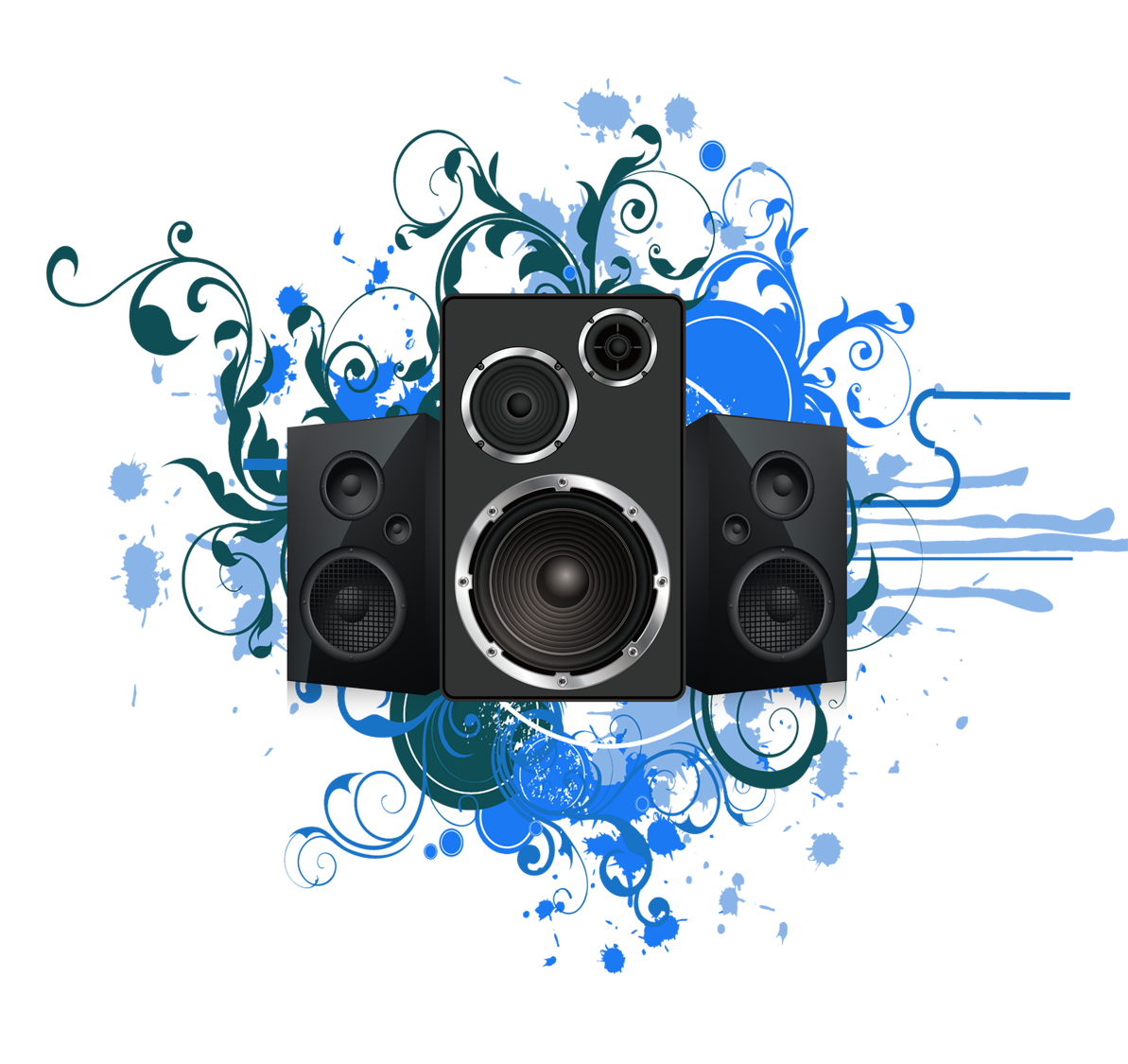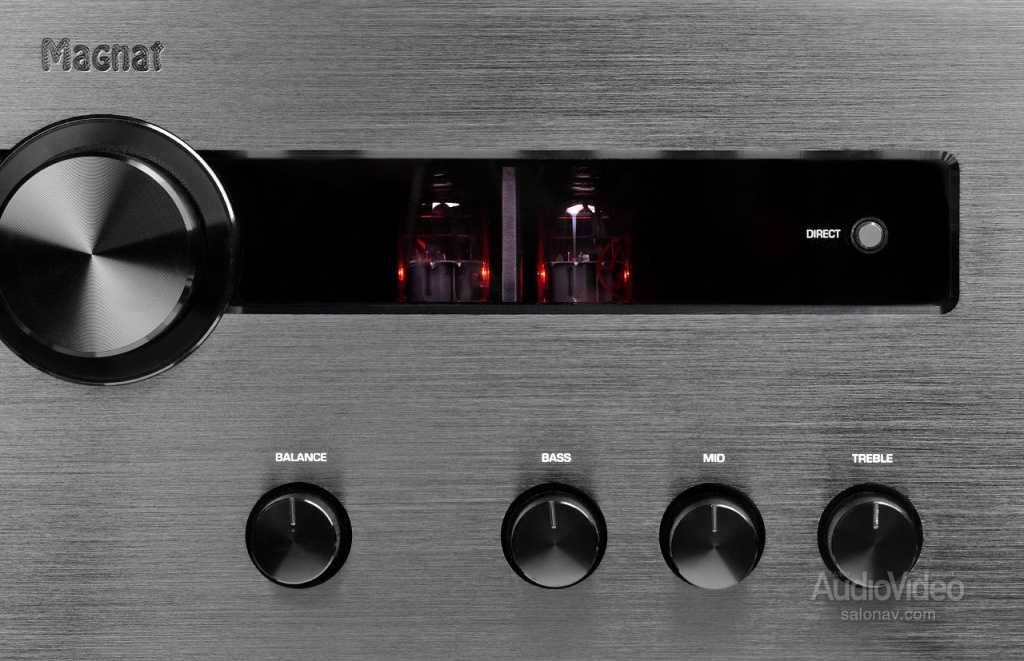Accessories & Packaging
One of the ways the company keeps the costs down It is by stripping down the packaging and accessories. As with almost all their products, this one comes in a very straightforward cardboard box, with nothing but a wall wart and a barebones instruction manual. On that note, the one thing we don’t love: that wall wart power supply. Schiit say, quite correctly, that this will drive absolutely any headphone currently available, but what that means is that it has to put out a ton of power. That means a wall wart almost as big as the amp itself. You can hide it away, of course — the cord is long enough – but it’s still an absolutely bloody enormous piece of equipment. You’ll need to supply things like your own RCA cable – this isn’t, after all, the iFi Audio micro iCAN SE (full review here). But honestly, that’s not really why you buy a Schiit product. And we would much rather have slightly barebones packaging and get a better price on a product than have extraneous accessories.
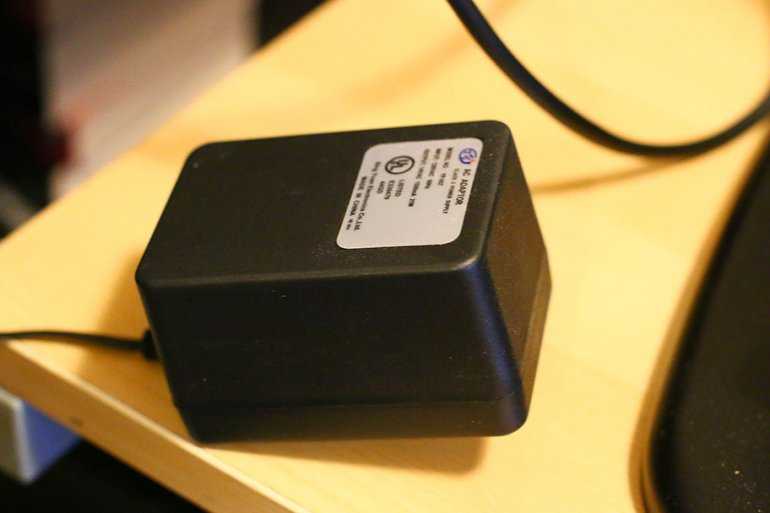
The Competition
Since the Magni 3 came out, several competitors have come on the scene. One of these is JDS Labs, with their Atom amp — an upgrade to their very basic Objective2. It’s not quite as exciting, in our opinion, with a slightly less interesting design than the Magni, and somewhat more neutral sound. That can sound really good, but we absolutely do prefer the Magni 3, which we think is a lot more fun, both in terms of design and in terms of audio quality. It costs less, too. However, both amps definitely have their place.
The AudioQuest Dragonfly Red is quite a different proposition to the Magni, but works as a superb alternative for those operating off of laptops or tablets. A simple USB stick with absolutely cracking amplifier and DAC included in it, it’s a firm favorite in the world of audio. We think the Magni is more versatile, in the sense that it can function as a preamp, and allows you to use a DAC of your choice. No argument from us about convenience though — the Red wins hands down on that score. An enduring little gizmo that deserves to be as popular as it is.
Then there’s the FiiO Q5. It’s an excellent amp/DAC combo, and is highly portable. However, it’s more than capable of moonlighting as a desktop amp, and it’s definitely a viable alternative to the Schiit model.The sound is good, if not spectacular, and while we think it is perhaps a little bit too chunky for a portable amp, it definitely delivers an instant, crisp boost to your sound. Well worth looking at. There’s a newer version, the Q5S, but we think it does offer quite enough to justify the extended price. Go for the original Q5.
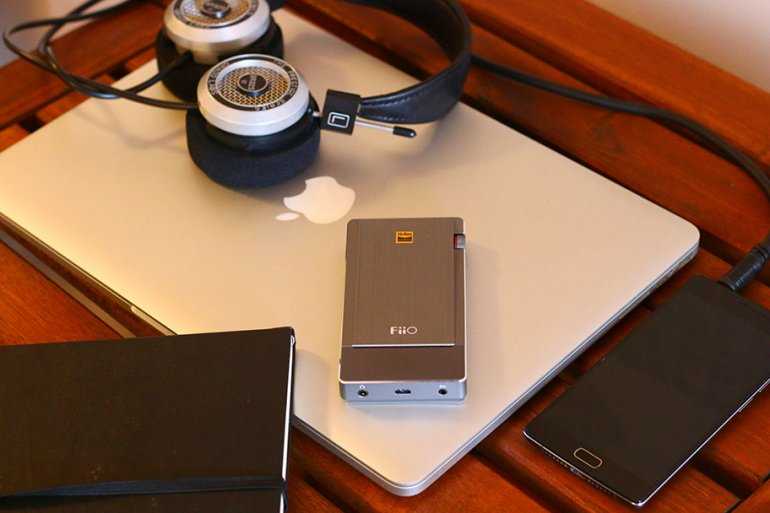
Schiit do make alternative amps to the Magni 3 — as in headphone amps without included DACs. Our favorite is probably the Vali, which costs $169 to the Magni’s $119. What do you get for your extra $50? Easy — tube sound. A gorgeous, gooey resonance that gives real life to bass and kick drums. It is essentially a Magni with an added tube, with an almost identical design. While we think the Magni offers better value overall, this is still a fun amp to have around. It has a great range of features, too, including preamp outputs, and the ability to swap out the stock tube for one of your liking. They also make several combination DAC/amps, so check those out if you want a full, one-box solution.
But back to the Magni 3 It’s an easy pick for an Editor’s Choice award, putting it among the best of the best products currently available. It never pretends to be anything other than what it is: A simple, straightforward desktop amplifier that delivers absolutely cracking sound at a price that still, even now, makes us blink in surprise whenever we see it. At a time when equipment is getting more and more expensive, when great sound is being closed off by higher prices and tons of jargon, when people are walking around with headphones from Skullcandy and Beats By Dre the cost far more than they should, without even the most basic knowledge about how they could easily and cheaply improve their audio setup, it is absolutely imperative to celebrate products that make it easy, simple, and inexpensive to get great sound.
And when it comes down to it, what the Magni 3 offers is so compelling that we genuinely can’t think of another competitor in this particular price range. Up until about $300 – more than three times its cost – there’s simply nothing else like it. It takes all the 2-Uber-Multibit nonsense of the previous Magni generation, and simplifies it. It offers terrific sound, wonderful design, splendid ease-of-use, the ability to power just about any pair of headphones, and – as we keep harping on about – an attractive price. And even if it didn’t, it still has the greatest on-switch noise of any amp out there.
Design
Housing and Aesthetics
You want to know what the most satisfying sound in the audio world is? We’re not talking about actual music – we’re talking about the sound of the hardware. We’ll tell you: it’s the sound of the switch that turns on the Magni 3. For some reason, it just hits the spot. Not only is the switch itself well-designed – a long, chunky piece of metal at the back of the amplifier that is easy to find without looking – but it makes the most wonderful clunking noise when you turn it on. Schiit use this switch across all their amps, as far as we know, and it works really, really well. You think we’re joking about this? Not a bit of it. When we evaluate audio gear, we take absolutely everything into account, including something as small as turning a product on. This is by far the most satisfying method of doing so we’ve ever come across. It’s a small moment of joy – one of several we had with this amp.
The company has a very distinctive design aesthetic, with the signature silver brushed metal and curved top edge that populates just about all its equipment. And like all that equipment, the new Magni is dead simple to operate. Round the front, there’s a volume knob, as well as a standard 6.3mm headphone jack. Round the back, clearly labelled in the company’s distinctive font, there are twin RCA inputs and outputs, a power jack, and two switches, both of which deliver that amazing noise when you flick them. There’s the power switch, as well as a gain switch, to ensure you’re delivering the right amount of power to your headphones.
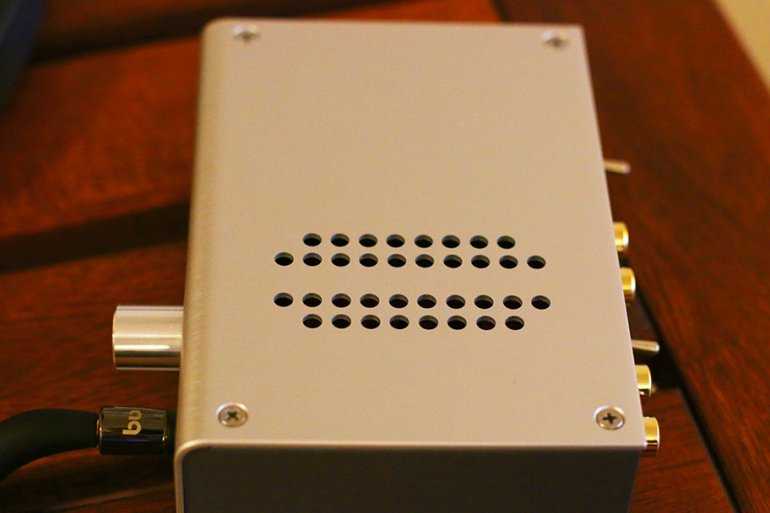
Build Quality
There’s nothing here that doesn’t work well, and there’s nothing that doesn’t feel like it could withstand a tank driving over it. This is one of the most solidly-built amps we’ve ever come across – something we’ve come to expect from Schiit, but still a pleasant surprise when we actually have one knocking around. It’s designed to be stackable with the current Modi 2 DAC, as well its Uber and Multibit variance (as well as, inevitably, the Modi 3 that simplifies all of this into one model). While it would be nice to see the volume knob of the Fulla 2 used here – which is still one of the most user-friendly knobs we’ve come across – we accept that it would mess with the design a little bit. This is more of a personal thing, anyway: in almost all areas, the Magni 3 just crushes it, in terms of design. The only amp that we feel matches it in terms of solidity is a more recent one, the FiiO Q5 (full review here) which has the added benefit of an included DAC, as well as being portable. Still prefer the Magni 3 though…
Updates Since Release
We have to take a deep breath for this. It gets a little complicated. Shortly after the Magni 3’s release, Schiit rebranded the line. For a while, the Magni 3 was simply known as the Magni (and confusingly, the URL for the product page on their site refers to the Magni 1!)
Then, the company went further, replacing the Magni with an upgraded version called the Magni 3+. This was essentially the same as the original Magni 3, with a slightly upgraded set of internals and a new sound signature. To make things even more interesting, Schiit released a variant called the Magni Heresy, an amp in fetching black that relies on op-amps for its sound, and which we think is slightly more tonally neutral. Both the 3+ and the Heresy cost $119.
It’s a confusing state of affairs, but what we can say is that whatever variant you go for, this is still one of the best headphone amps ever made. The newer variations don’t cost any more than the original, and offer creative flavors to tempt even the most jaded listener. While things are confusing right now, we think the Magni remains on top.
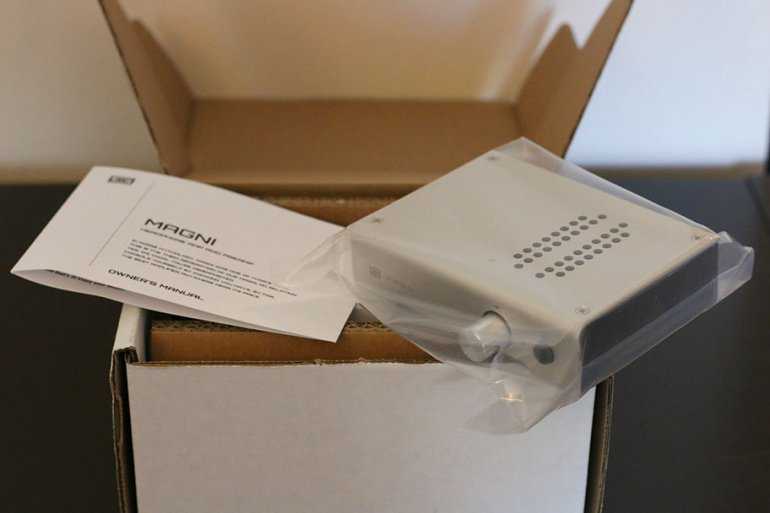
Summary
Three of these units (Magni Heresy, Atom and Archel 2 Pro) are audibly indistinguishable to me, so choosing between those really comes down to other factors, such as available power, features, form-factor, price, aesthetics and so on. And for me, I’d take the Magni Heresy out of those three as it shares the lowest price of the units compared, I like the form-factor better, the pre-outs would work better with my other gear, I own headphones that like lots of raw power and I significantly prefer the aesthetics (though I’d like it even better if it was all black).
So that leads me back to the original focus of this review – which is the Magni 3+ and Magni Heresy …
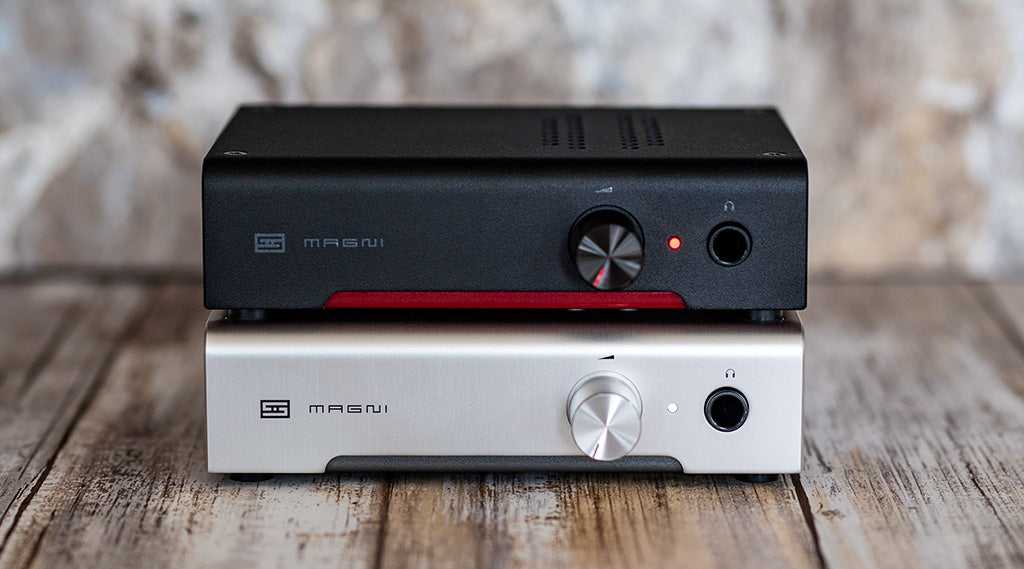
When it comes to simply listening to music for pleasure, I rather like the fact that there are two very similar choices here, both being objectively excellent performers, but each executed differently such that you can easily satisfy “one for the head, and one for the heart”.
For me, music — like most experiences in my life — is about emotion, involvement and most importantly raw, simple, pleasure and in this case that means I would choose the Magni 3+.
I enjoyed listening via the Magni 3+ more over the course of my evaluations. Its technical/measured performance is close enough to the Heresy that I don’t feel, on an objective level, I’m giving up anything there. And it’s available in a finish that’d match the two DACs I would be most likely to pair it with.
Thus Magni 3+ becomes my new, and enthusiastic, recommendation for when I am asked which ~$100 amplifier to buy, rather than spending the time to listen to them for yourself and make up your own mind (I will always recommend personally auditioning gear before purchase). Even when following the “headphones first” doctrine to extreme levels, the Magni 3+ turns in an excellent and compelling performance — and at a level that would have been unthinkable at such a low price-point even a couple of years ago!
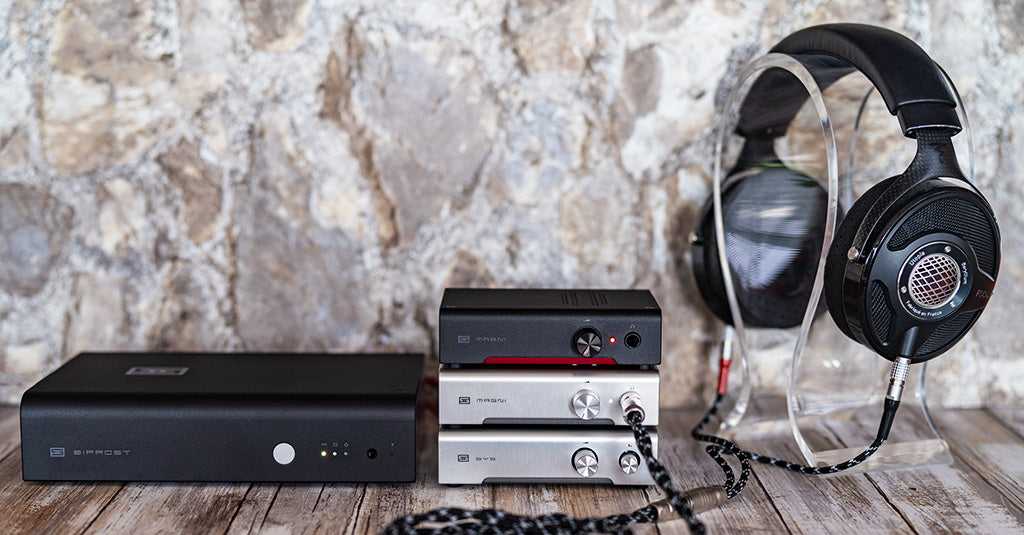
Ultimately, while I feel they serve different masters, and I have a definite preference for the Magni 3+, I think both the Magni 3+ and Heresy are well worth auditioning if you’re looking for a capable, powerful, headphone amplifier of this level and form factor, regardless of where your performance biases sit.
And if you want to do such an audition, back-to-back, both units are available in “The HEADPHONE Community” forum’s “Community Preview Program”.
— Ian Dunmore (@Torq)
—
Join the discussion on the Magni 3+ or Magni Heresy at «The HEADPHONE Community».
—
Sound
We haven’t tested a headphone amp this affordable for some time. Instead, we tend to see headphone amp and DAC combinations, such as the Cyrus SoundKey (£99) and Audioquest Dragonfly units (from £90).
So, rather than reaching straight for a direct competitor, as is our typical approach, we opt to just listen to the thing. After all, if it improves the sound quality from our MacBook Pro to a sufficient degree for just £110, it’s a winner, right?
Running a 3.5mm-to-RCA cable from the audio out on the laptop to the Magni 3, we plug in a pair of Grado SR325e headphones and warn anyone within earshot (they’re a bit leaky).
Tidal’s Masters Essentials playlists are a good place to head for a selection of MQA hi-res audio tracks and sitting back to listen we find ourselves instantly drawn into the music.
MORE: Tidal Masters review
The Schiit Audio sound is, it soon becomes apparent, a very easy listen. There’s no harshness or edginess at the top of the frequency range, bass notes are bedded in nicely without being overbearing, and vocals are placed precisely where they should be.
The reverb and timbre of the drums on Counting Crows’ sound jangly and ragtag as is the band’s wont. Donny Hathaway’s demonstrates there are no issues with timing, the track sounding perfectly in control throughout every elaborate twinkle of keys.
Again, the beautifully clean balance of the sound is to the fore. Ben Harper’s is an explicit example of this overall smooth solidity – but the crack of the occasional rim shot still punches through the track as it should.
MORE: How to build the perfect hi-fi system
You can get plenty of grunt from this amp, too. Soundgarden’s is given the drive and attack the grind of guitars demands, while the vocals soar across the sonic spectrum, revealing an admirable handling of dynamics.
More of an electronic music fan? The crispy drums and bubbling bass of Butch’s are handled just as confidently through the Magni 3, the track tapping along at an infectious pace.
You might lose a little in terms of ultimate fidelity but that’s more than compensated for by the well-balanced, musical sound. We just enjoy listening to music more when it’s fed through this box.
Experimenting with headphones from Audeze, Grado and Sennheiser, it’s clear, once you’ve made any gain adjustments, that it’s a versatile sound too.
Build
Schiit kit opts for simple, industrial designs and the Magni 3 is no different. There’s a brushed aluminium casing over what would otherwise be a basic, black box.
About the size of a chunky wallet, it will fit pretty much anywhere and looks smart enough next to a MacBook Pro.
It’s worth pointing out the oversized power plug needs some room, should your sockets be a little squeezed for space. The fascia looks clean with just a small logo, an elongated volume knob and the headphone connection.
A pattern of holes dotted on top allows the unit to breathe, which proves necessary as this Schiit runs pretty hot.
That clean front means most of the action is around the back. This comes in the shape of one stereo RCA input and one output, plus two old school toggle switches – one for power, one for hi/lo gain (17 or 6db). That analogue output tells you this headphone amp can also act as a preamp, allowing you to connect straight to a pair of powered speakers.
If you want the last word in build and design, or endless connectivity options, this isn’t for you. But for an affordable headphone amp, we’re happy enough with what’s on offer here. After all, it’s mainly about how it sounds…
MORE: 10 affordable ways to upgrade your hi-fi system
Кому это нужно?
Мне действительно не нужен полный стек Schiit, но он мне нужен.
Schiit Magnius делает то, что он рекламирует, практически без тепла и дополнительного шума. Это продукт, произведенный в США, который обеспечивает непревзойденную производительность при не имеющей себе равных цене. Имеет ли это смысл для тех, кто не по пояс в хобби аудиофильских наушников? Не за что. Это круто? Черт возьми, брат. Если у вас есть наушники, которым требуется большая мощность и которые можно подключить к сбалансированному усилителю, вы можете сделать намного хуже, чем Schiit Magnius, и потратить на это гораздо больше денег. 8/10 признаков стойкой потери слуха
Обзор основан на образце, предоставленном производителем. Усилитель для наушников Magnus можно приобрести непосредственно в Schiit за 199 долларов.
Плюсы
- Казалось бы, бездонный запас энергии
- Вырабатывает мало тепла
- Отличный горшок для регулировки громкости и предусилителя
- Может работать с несимметричным и сбалансированным редуктором
- Привлекательная цена на производительность
Минусы
- Использует стенные бородавки для питания
- Излишек для нормального игрового использования
- Возможно усиление сетевого шума
Источник записи: https://www.shacknews.com
